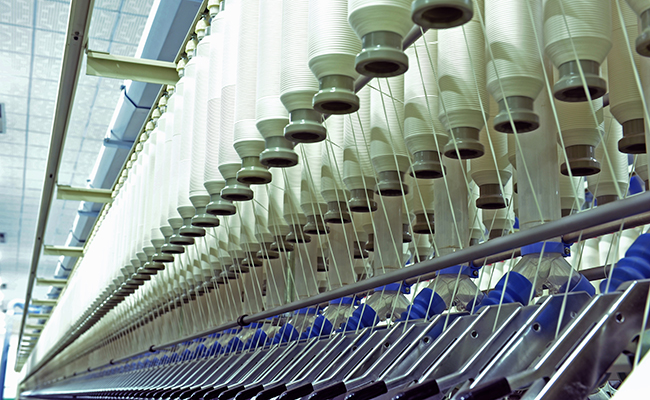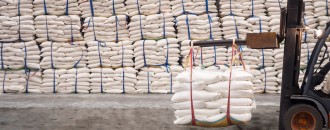
'Tough time ahead for India’s textiles exports'
Interview by Sai Nikesh | The Dollar Business
The Dollar Business (TDB): How likely the Indian textile industry is to achieve the export target of $500 billion by 2025, as estimated by industry bodies? Do you think free trade agreements with European countries will help India achieve the target? Atul Mishra: First of all touching a market size of $500 bn by 2025 is an ambitious targets for India and it requires multiple strategies to attain such targets. Having bilateral multilateral trade tie ups with USA and EU, which are major export destination for India’s Textile &Clothing (T&C) sector, is one of them. Other strategies would be to focus on attracting investment and creating world class efficient capacities which seems lacking. Currently around more than Rs. 300,000 crore is invested in the industry with the help of Technology Upgradation Fund Scheme (TUFS) of Central Government, which helped industry to reach at a market value of $110 bn. Moreover, apt economic policies and reforms should be taken up to create conducive business environment and protect industry from cyclical external shocks of decline in demand. Therefore adequately designed strategies would only ensure such huge targets besides engaging with countries for trade tie ups for preferential market access. TDB: If you feel $500 billion export target by 2025 is too high, what do you think is the realistic figure in terms of expectations? Atul Mishra: Here at CITI, we have projected market value of India’s T&C sector at $350 bn, by 2025. On the basis of our previous study and presumptions over industry usage and its full capacity, investment flow will be almost double and other factors will remain constant. Moreover, we have also assumed that entire industry would be growing at 12% per annum during the entire period from 2014 to 2025. These expectations can only be met if country remains free from see-saw which economy may experience in form of demand shocks in external economies due to downsizing of global growth.
 Atul K Mishra, Economist, Confederation of Indian Textile Industry
Atul K Mishra, Economist, Confederation of Indian Textile IndustryTDB: What do you think are the major challenges being faced by the industry currently? Atul Mishra: Indian textile industry is going through challenging face, global demands are at ebb, economic transition of China, relentless decline in cotton price in Indian and global market, imbalances in domestic textile intermediary goods supply and credit crunch are some of them to be mentioned. Now for almost 10 years govt. has not accepted major demands of industry like corrections in inverted duty structure prevailing since so long, reduction of excise duty on MMF, putting textile industry under priority sector lending, providing credit to industry at 7% and resolving the blackout and left-out cases of TUFS are some other policy challenges industry is facing. TDB: What are the other challenges hindering overall growth of the industry. How can country's textile export become competitive? Atul Mishra:India’s fibre consumptions is highly skewed towards cotton and is considered as one of the obstacles in the growth of Indian Man-Made Fibre (MMF) textile industry in country. Moreover, discriminatory policy where cotton fibre and its textile goods are either exempted or have optional Central Value Added Tax (CENVAT) rule, while MMF has to pay excise duty and claim CENVAT adds to the dismal performance of India’s MMF textile industry in domestic as well as in external market. MMF industry has to pay 12.5% excise duty which is quite high eating away the profits of industry. Currently India has cotton vs. MMF consumption ratio of 60:40 while in global market it just reverse and are in the ratio of 30:70. Therefore, imbalances in the domestic market fibre consumption and relentless biased policy support to cotton is hampering the growth of MMF industry. India accounted less than 3% in the global MMF based textile goods supply. TDB: What are major fallouts on Indian textiles trade if the Trans-Pacific Pratnership (TPP) comes into effect? How do you see the prospect of Indian textiles exporters after TPP? Atul Mishra: Amongst the 12 members of TPP Vietnam would be the largest beneficiary if the TPP is concluded successfully as tariffs on textile goods would be reduced to zero in the major markets like USA, Japan and Canada which accounts 20% of the global textile imports, besides Australia and New Zealand are also significant importer of textile value added goods like garments and made-ups. This agreement would pose a greater threat to India’s textile business as a significant supplier to these markets and yarn forwarding rules of origin as proposed by USA if agreed upon by all members will give advantage to Vietnam to buy textile intermediary goods from USA, Australia, New Zealand and Japan and then export them as value added products to all members of TPP. Indian cotton and wool fibre would be having tough time in international market in coming times. India will continue to face higher duties in these markets except for Malaysia, Vietnam and Singapore with India is having ASEAN agreement. TDB: How far the governmental policies are helping the sector and do you have any suggestions for the government in terms of policy changes? Atul Mishra: There is clamor in industry for apt and befitting govt. policy to save industry from persisting economic perils across globe and irresolute economic environment which is attenuating business sentiments. Long awaited FTP which was announced in April 2015, was distressing for industry as markets and products of T&C sector are partially covered to support and offset the high freight cost, and other externalities of international market and are largely insufficient with a view to enhance India’s export competitiveness in the markets to which they have been linked. Moreover, support to offset infrastructural inefficiencies and other associated cost involved in marketing of products have also been overlooked by policy makers. Capacity enhancement and scaling up of industry is also suffering standoff on account of non-disbursal of subsidy under TUFS and unlikeliness of its continuation. Therefore, it is high time that govt. revisits its FTP and announces the continuation of TUFS. TDB: What are the sector's growth prospects for the current year? Atul Mishra: Domestic textile industry growth should remain unaffected and may grow around 10% at least in current fiscal looking at increasing private consumption expenditure and spurts in the manufacturing (for august 2015) as captured in CSO data in its current release. However, India’s T&C exports scenario remained grim and downward growth trend continues as it has reached to 0.7% for cumulative period of April-Sept. 2015, lowest in the last six months. It is expected to go further down form current level, as IMF has already downsized global GDP growth for the year 2015 which will have detrimental effect on India’s T&C exports growth and may restrict it well below 5% at the end of current financial year. Moreover, declining import of cotton yarn in China, restriction on cotton import in China from India and recent development of 10% duty imposed by Pakistan on Indian cotton yarn will add to the woes of India’s T&C export growth prospects.
October 23, 2015 | 12:22pm IST.





 to success.
to success.